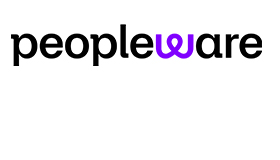Charles Watson shares his advice for forecasting contact volumes on live chat and then calculating your staffing requirements.
According to a recent WFM Benchmark Study conducted by injixo among more than 250 contact center professionals worldwide, chat and social media are getting more and more popular as major contact channels.
As a result, with increasing workload share, they are also more often subject to forecasting. In fact, around 40% of contact centers surveyed in the benchmark study indicated that they regularly forecast and calculate required staffing for chat.
Chat as a Contact Channel
Chatting is a way for customers to quickly get through to an agent. These days, many of us have probably used chat in support request at least once – simply because it is very convenient. One doesn’t need to call in and spend time on the phone waiting in line for someone to pick up.
Generally, the estimated wait time is available for customers so they know whether to wait or do something else while waiting for an agent to respond. Live Chat as a contact channel offers customers not only convenience but also flexibility. Likewise, it provides contact centers a way to service contacts more efficiently.
The efficiency primarily comes from the capability to deliver multiple chats to an agent at a time. When an agent has more than one active customer at a time, that’s called “concurrency”. Concurrency is the key factor in planning for Live Chat.
Forecasting for Live Chat
When building a forecast for chat, you start out the same way as with calls. You should look at your historical volume to project the expected future volume. This includes looking at year-over-year growth, seasonality and any new trends that need to be included. Add to this the business intelligence that may reflect different volume in the future than in the past.
An example is a new marketing initiative or a change in customer policies. In a multichannel environment (meaning your customers have several different ways to contact you) this work needs to be done for each channel independently.
Therefore, it is important to also look out for trends over time, such as a shift from phone to chat or email, which is a common occurrence in many businesses.
Dealing With Channel Shifts
Channel shifts may not always be one for one, either. You may find that your customers actually contact you more when they shift channels. This can be driven by ease of contact.
If your customers find it easier to start up a chat than call, they may initiate more chats. As a result, a channel shift may change your total volume.
Consider that as volume shifts, given that you are able to identify your callers and contacts, you should spend some time analyzing your contact rate to see if it’s changing.
A “contact rate” is simply calculated by taking your total contacts and dividing it by a certain business metric. One example in a sales environment is to divide contacts by sales. For instance, in such a case, every 100 sales you make, you get X contacts.
If you’re in an insurance company, it may be the number of contacts divided by the total number of members. You can even get more granular here and determine the contact rate for new members (who may need to contact you more because they are learning your company) vs. the contact rate for tenured customers.
Think about determining your contact rates for each channel, so you know how to react as you see the channel shift.
Calculating Your Staffing Requirement
Once you’ve created the demand forecast, the next step is to determine the number of agents you need to handle the work that comes in via Live Chat.
Again, this starts very much like a call forecast. If you’re using a spreadsheet, calculate the requirements at the monthly level down to the interval level.
You can use occupancy as a proxy for service level (more on this at the end of the blog) for monthly requirements. For interval requirements, it’s best to use an Erlang-C Calculator or your workforce management system.
Considering Concurrency
Once you have the base requirement, you need to factor in concurrency. This can get tricky.
To start out, you have to make an assumption on how many Live Chats an agent can work on at a time. It will generally be between 1 and 2 but it can also turn out to be higher, depending on your business and the market you’re serving.
Your contact delivery system will have a threshold set to how many chats an agent can work on at a time.
As a short exercise, we’ll assume ours will deliver a max of 2 for our example. So if an agent already has 2 chats open, it will not send them a third. With the setting of a maximum of 2, it may seem that you would set your concurrency at 2. But wait. Remember that this is the maximum, not the average.
On average, agents will likely handle less than 2 chats at the same time. In order for them to always handle 2, you’d need to consistently have a queue of chats waiting on an agent.
In production, there will be slow times and busy times. You may also have agents who aren’t proficient in handling 2 chats and may be limited to just handling 1 at a time.
The best way to determine the forecasted concurrency is to look at your historical actual concurrency as the input. I’ll use the example of 1.6 concurrency.
If this looks similar to your concurrency level, then you would need around 160 agents for calls and 100 for chat. The reason behind that is that 100 agents working 1.6 chats each would handle 160 FTE worth of chats.
Paying Attention to Trends and Seasonality
The Live Chat concurrency may have trend and seasonality in it as well. If your contact volume fluctuates and you have flat staffing, it can impact your concurrency.
If you’re overstaffed, your concurrency may go down, because there isn’t enough volume to keep your agents occupied. If you’re understaffed, your concurrency may go up because there is a queue of chats waiting on your agents. So in a nutshell, this number needs to be constantly calibrated.
Keep in mind that the actual assumption used in your forecast should be a blend of historical actual and the number your operations team expects to manage productivity to.
When there are variations in projected concurrency compared to your forecast, look for over- or understaffing to see if that’s the driver. If this is the case, you may not need to adjust your concurrency level.
Some Final Words
All in all, consider that new technological advancements in today’s digital age, such the rise of AI (artificial intelligence) and machine learning, the emergence of new channels such as chat as well as higher expectations of customers regarding fast and outstanding customer service have really shaped the customer service industry.
Overall, chat (using both chatbots and Live Chat) is a great channel for your customers to reach out to your business in a convenient, flexible and self-served manner. At the same time, chat can help your contact center to become more efficient in responding to customer requests.
Planning effectively isn’t difficult but does require significant attention from workforce management to constantly validate the volume forecast and the staff requirement. Looking at channel shift and concurrency are two major ways you can be sure to nail your forecast big time.
Bonus Tip: Using Occupancy in Your Monthly Forecast
We know that occupancy is actually an output, not an input. But if you use it in your formula for FTE requirement calculations, it can really help to get you a good impression of required staffing at a weekly or monthly level. But how does it work?
As a first step, take a look at your historical data to see what occupancy you generally get when you achieve your service level. If you consistently have an 85% occupancy when you hit a service level of 80%, then you can build 85% occupancy into your forecast for staff required. This essentially adjusts your staff required to achieve your service level.
In your requirement, all of the efficiencies and inefficiencies are mainly covered using this method, because it’s based on reality. However, as your environment changes, you’ll want to update this correlation.
Watch out for situations when your schedules become more efficient or less efficient, or if you make a change that gives you a different economy of scale, and make sure that you revisit this number continuously.
This blog post has been re-published by kind permission of Peopleware – View the Original Article
For more information about Peopleware - visit the Peopleware Website
Call Centre Helper is not responsible for the content of these guest blog posts. The opinions expressed in this article are those of the author, and do not necessarily reflect those of Call Centre Helper.
Author: Peopleware
Published On: 20th Aug 2019 - Last modified: 21st Aug 2019
Read more about - Guest Blogs, Peopleware





 Peopleware is a leading workforce management (WFM) solution, trusted by over 500,000 users in 30+ countries. With smart forecasting, automated scheduling and real-time management, organizations can optimize workforce efficiency and keep work aligned with demand. From precise time tracking to flexible planning, Peopleware helps organizations boost operational efficiency and foster a more engaged, productive workforce.
Peopleware is a leading workforce management (WFM) solution, trusted by over 500,000 users in 30+ countries. With smart forecasting, automated scheduling and real-time management, organizations can optimize workforce efficiency and keep work aligned with demand. From precise time tracking to flexible planning, Peopleware helps organizations boost operational efficiency and foster a more engaged, productive workforce. 








